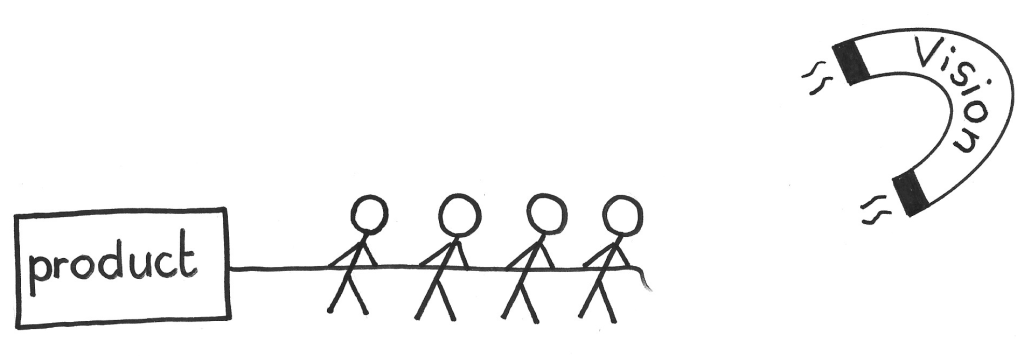The diversity in perspective within a team brings great value, because it raises the probability that the team will overlook no great idea. Admitting multiple perspectives and soliciting the input of people with different backgrounds and experiences helps the effort explore a wide variety of options.
The different experiences and ideas open additional, innovative perspectives that can be valuable. Unchecked, these differences can fracture the team by taking the team in multiple directions.

For a team to be truly effective, all members need to be pulling in the same direction. A goal becomes shared when the team takes ownership of it. The team takes ownership of the goal when it co-creates it. It becomes their goal.
The individual who embodies the passion for this new product effort takes on the role of Product Owner, around whom stakeholders and potential future co-workers rally to articulate and together to define and refine a Vision.

We can think of the Vision as having two components. The first—which we just refer to just as the Vision—is a broad future direction, while the Product Vision breaks down that broad direction into more specific business components.
The Product Vision covers these considerations:
- Key features of the product
- Who is going to use the product
- Customer needs the product will address
- How the vendor will benefit
The Product Owner owns the Vision and sets out to realize it by creating a Product Organization as well as by defining a Value Stream. The Product Owner articulates a path toward the Vision as a Product Road-map, and works with stakeholders to reduce it to a concrete, specific Product Backlog.
